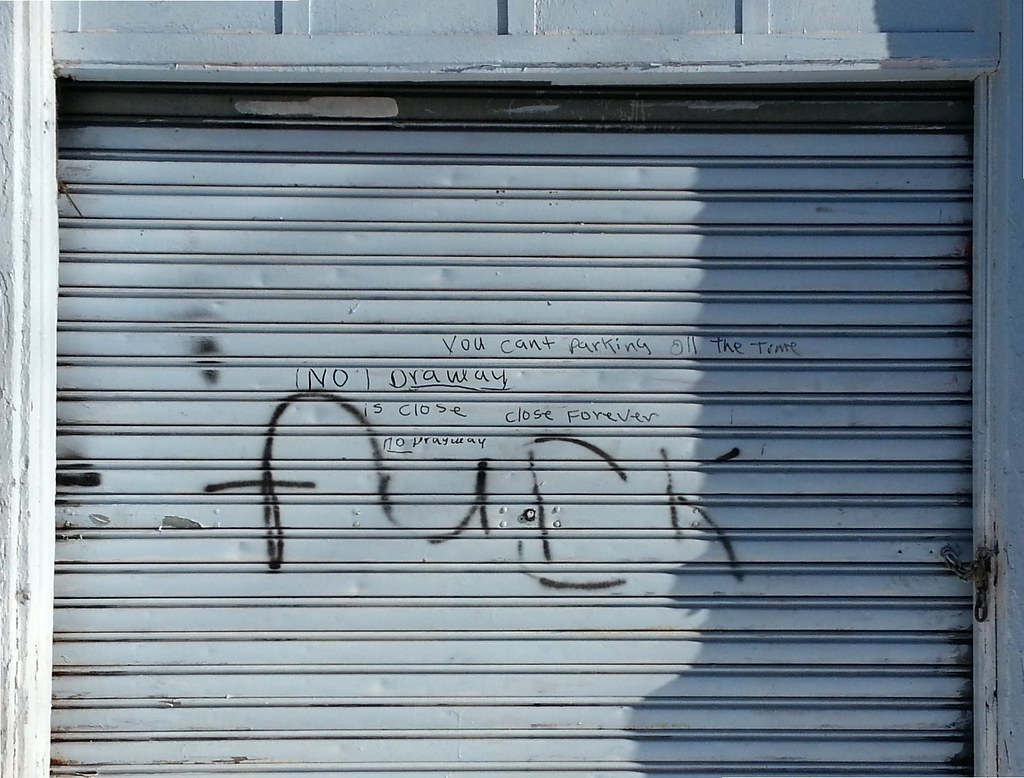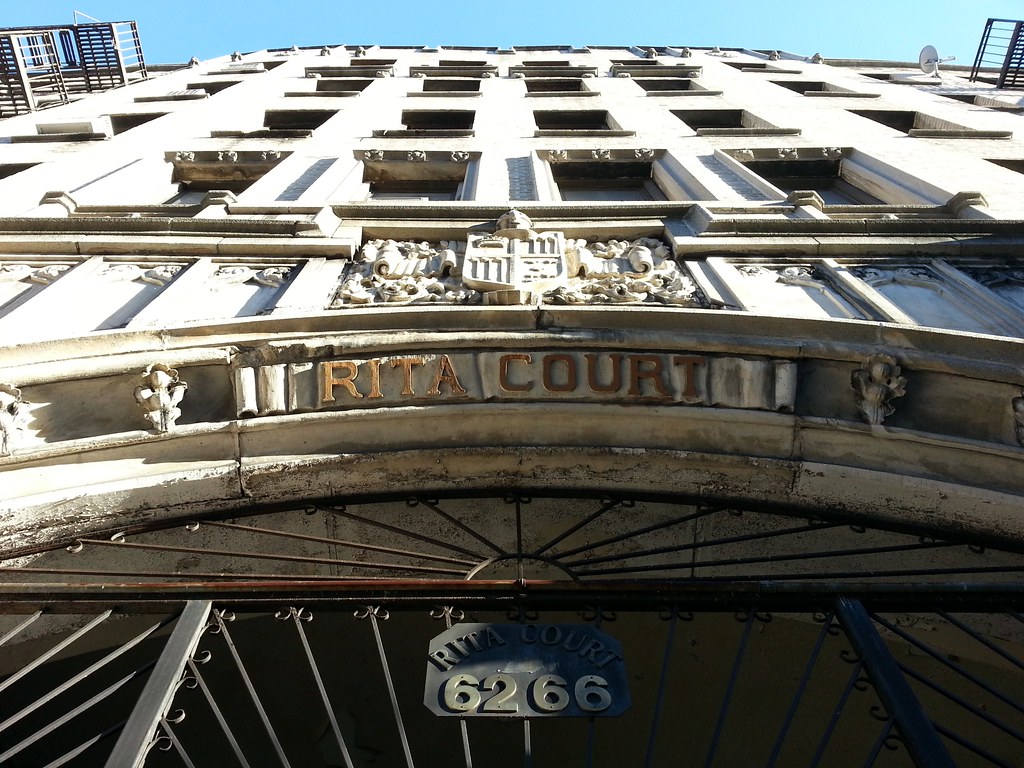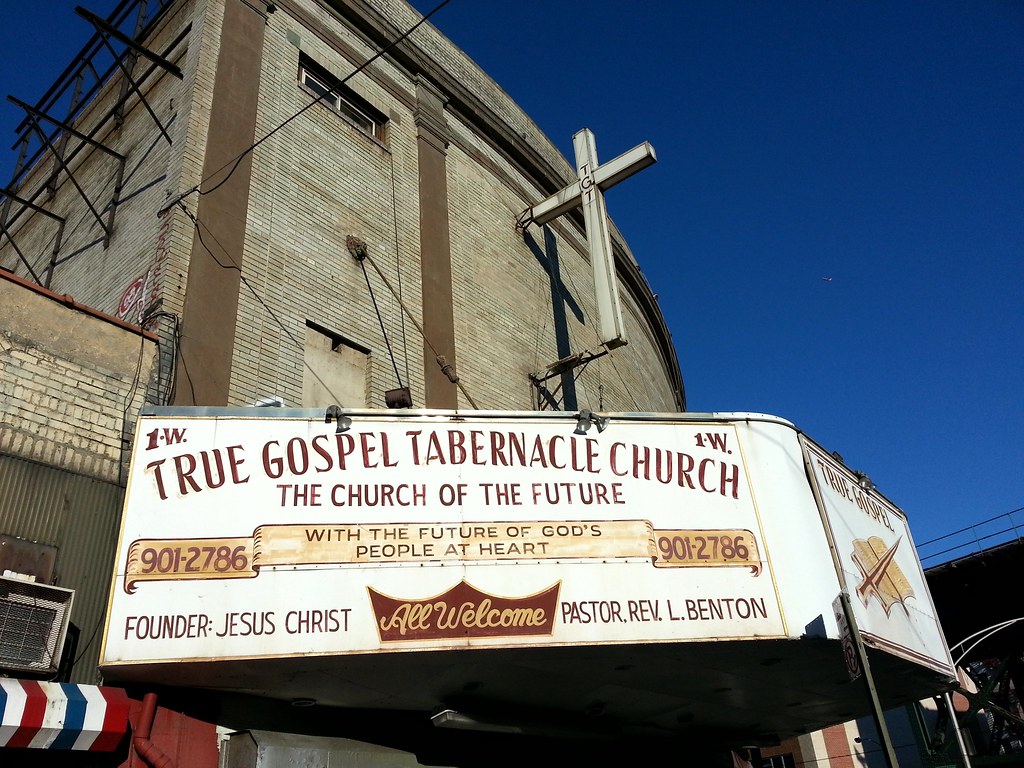
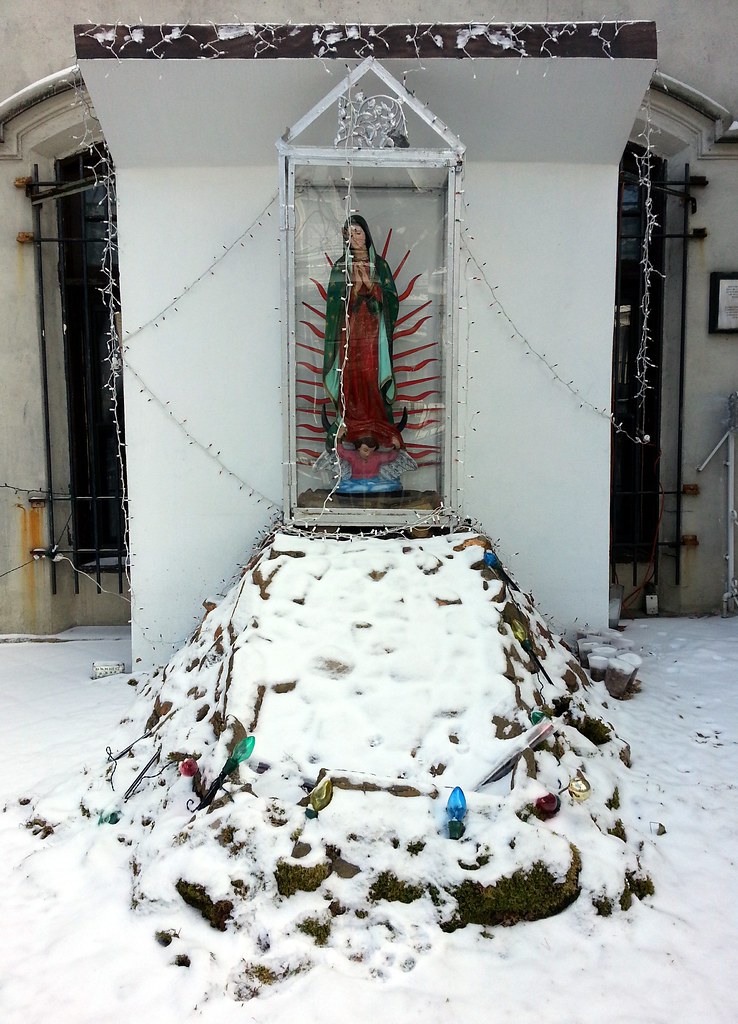
Florally festive in the spring, Our Lady of Guadalupe apparently prefers a much simpler, nocturnally illuminated look for the cold months of winter.
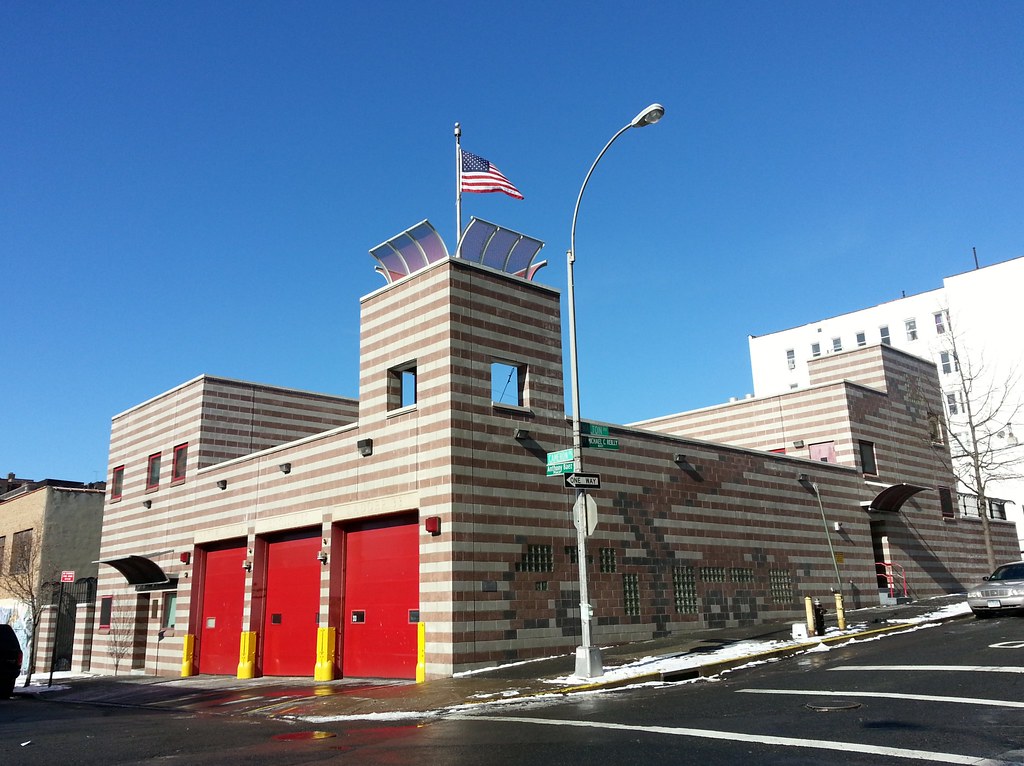
This truck-like artwork is built into the wall of the Engine Company 75 firehouse. A plaque on the building reads:
Mierle Laderman UkelesInterestingly, Ms. Ukeles is the Department of Sanitation's (first and only) artist-in-residence, having held the position since 1977. (Sanitation also has an anthropologist-in-residence: Robin Nagle.)
HONOR, 2000
A fire truck that carries...
Two Carved Hands:
Two hands replace the logo on the fire truck. One is the hand of a three year old girl and the other is the hand of her father. They live in this neighborhood. Their lives were saved by Bronx firefighters.
The Memorial:
The areas of the engraved glass blocks replace five storage compartments on the fire truck. They house the treasured memory of each firefighter who gave his life in the line of duty in the Bronx since the beginning of the last century.
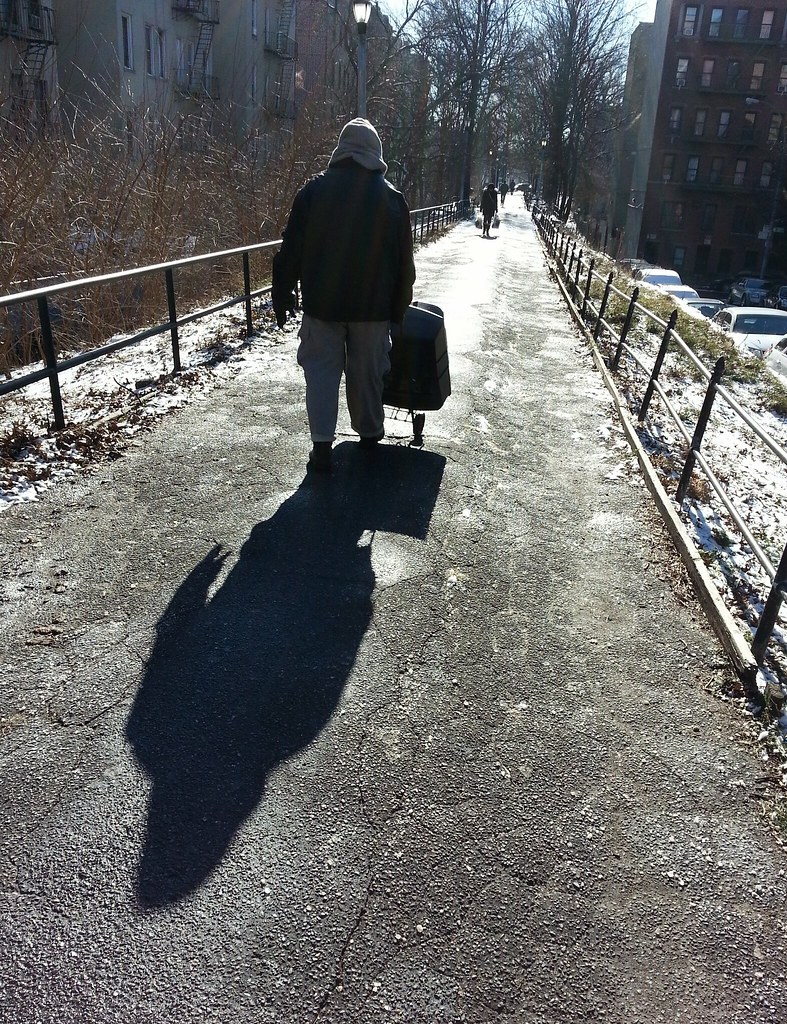
This humble pedestrian path runs along the top of a bygone engineering masterpiece, the lifeline that supplied desperately needed fresh water to a growing 19th-century New York City: the Old Croton Aqueduct.

This street makes a rather conspicuous cut through an otherwise elevated, stone-encased stretch of the now-defunct Old Croton Aqueduct (the southern portion of the severed aqueduct embankment is visible above). As you might suspect, Burnside Avenue did not exist at this location when the aqueduct opened in 1842. For 50+ years, the water traveled through a pipe inside a continuous man-made ridge here, with no roadway interrupting its progress.
Sometime around 1897, Burnside was extended westward through the path of the aqueduct, and a bridge was constructed over the street, carrying a conduit that allowed the water to continue south on its elevated course while vehicular and pedestrian traffic passed beneath it through a set of stone arches. A few decades later, Burnside was widened, and the bridge was replaced with an inverted siphon that routed the aqueduct below the roadway, creating the bluffs-on-a-river appearance that has existed here ever since.
In researching this crossing, I found an old photo that sheds some light on the history of a very small and very strange-looking vacant building that stands at the northeast corner of Burnside and University, adjacent to the aqueduct, and just to my right in the photo above. I didn't get a good shot of it, but between my lousy picture and this bird's-eye view, you can get a decent idea of what the place looks like. I'm not sure if this structure originally had some function related to the aqueduct, but, thanks to this photo from the NYPL's historical image archives, I do know that it served as a Tydol gas station during the 1930s. (You can also just make out a "GAS" sign on the building in this image from the 1920s.)
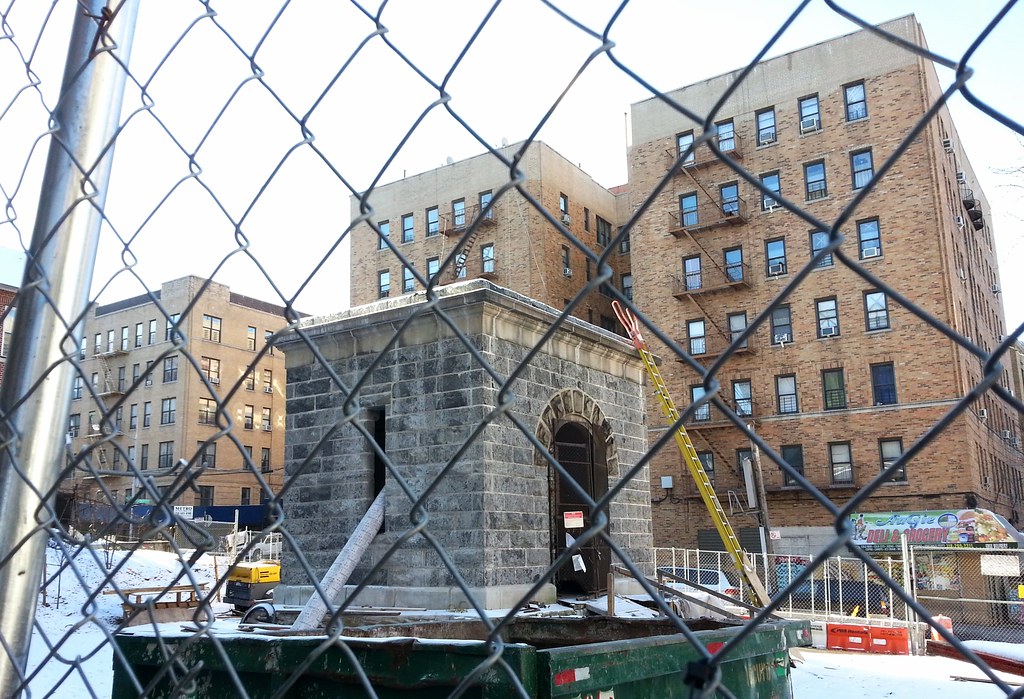
This little stone structure was built around 1890 to serve as a gatehouse on the New Croton Aqueduct, providing access to the water supply system below.
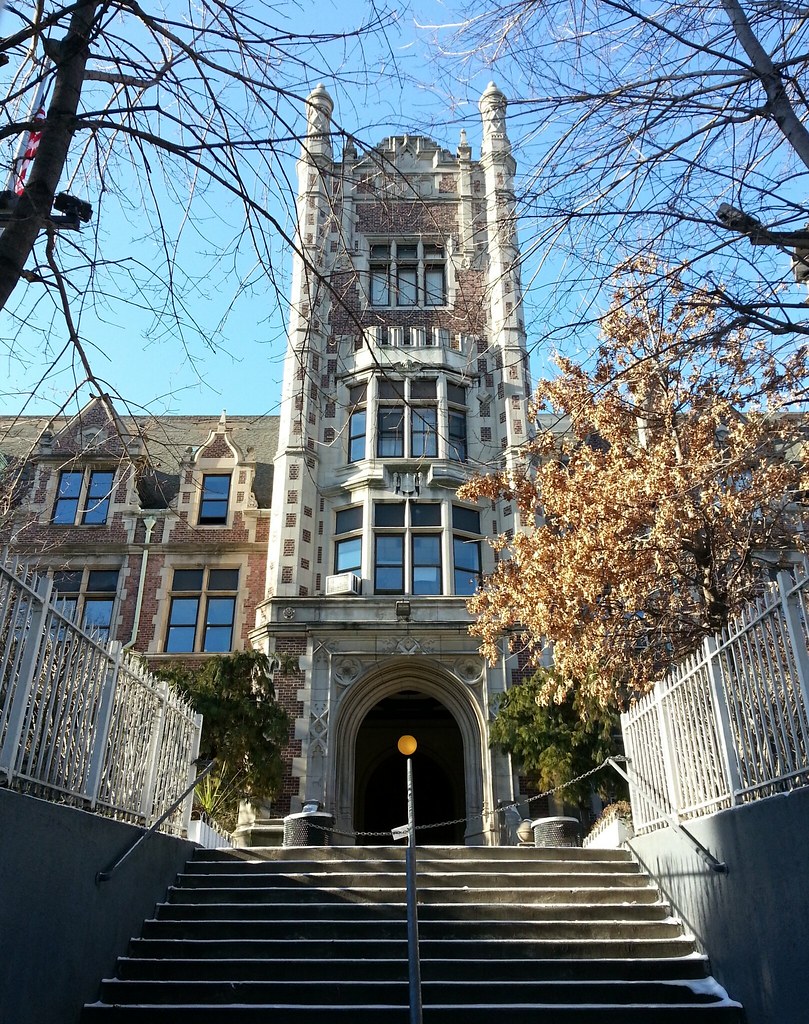
This "full-scale university of work" run by the federal Department of Labor is housed in the old Messiah Home for Children. This photo gives you a good sense of how large and elaborate the building is.
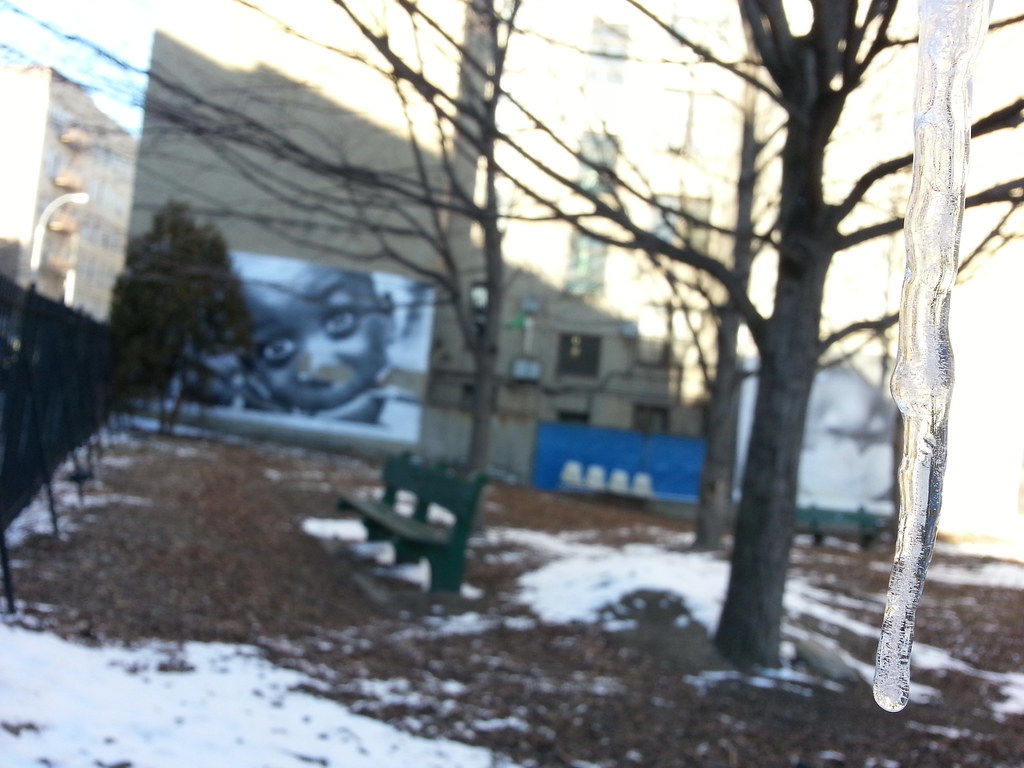
The large face in the background is part of JR's Inside Out project.
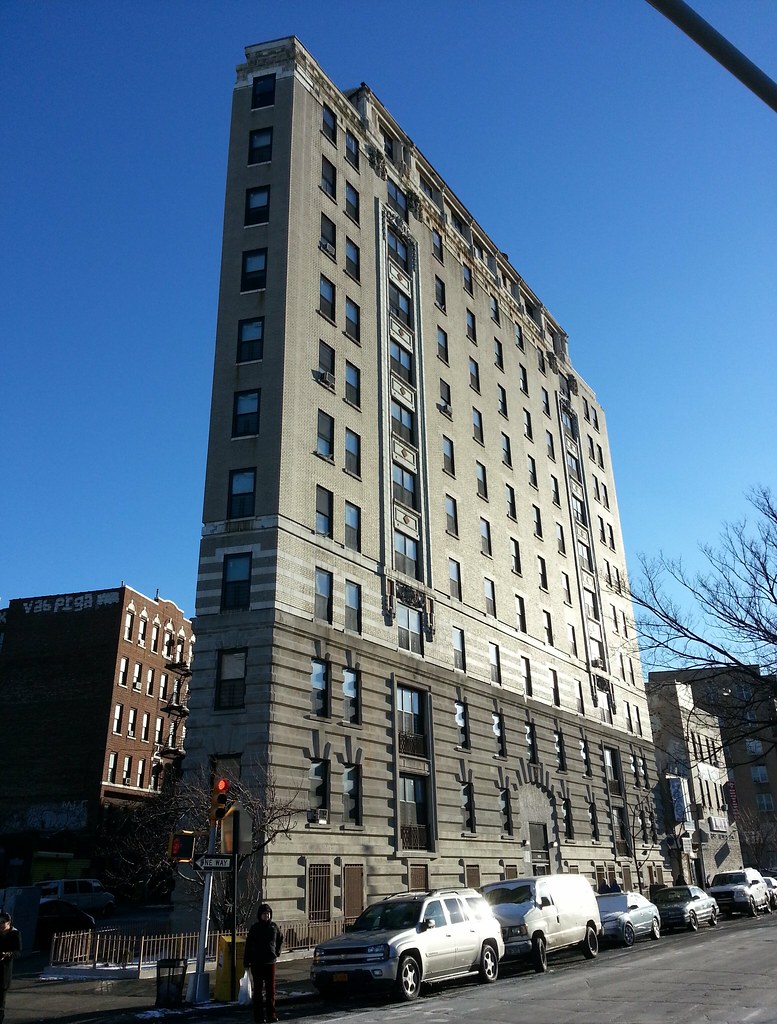
This Bronx version of the Flatiron Building was "for many years" the tallest building in the borough.

This gazebo replaced the old Zborowski mansion, demolished in 1938, that once stood here in Claremont Park. In his history of the Bronx, published in 1906, Randall Comfort reports (with an illustration):
The old lane that led from the Zborowski to the Stebbins Mansions did not run in a straight direction — far from it. It made a regular "U" of itself, so as to avoid what has recently puzzled engineers and contractors — the famous "Black Swamp." I had been told of the loss of a number of Mr. Zborowski's blooded cattle at night, and I have heard of school children who had occasion to pass this way, arriving at school with their clothing a mass of mud, but I was entirely unaware of the cause. Situated in the dense thickets behind Claremont Park, its name has clung to it, ever since the time of the Indians, who superstitiously regarded it as the resort of evil spirits. When the early settlers found to their dismay that its depths engulfed their cattle whenever they came near it, they carefully surrounded its area with a rough fence.In a chapter of a later work from the early 1920s, however, Mr. Comfort updates us on the situation: "Human persistence, backed by more thousands of tons of material, at last proved triumphant, and now Morris Avenue reigns supreme."
For many years, even centuries, it lay forgotten, until the city authorities sought to open Morris Avenue through this harmless looking pond. What, then, was the amazement of the contractor to find that 60,000 cubic yards of filling had suddenly sunk out of sight into the quiet surface of this remarkable pit! At last, however, the work seemed to bring good results and the earth was filled in to the required level. But next morning smiles were suddenly turned to dismay. Every particle of new earth had disappeared as if by magic into the mouth of the mysterious swamp! A party of expert engineers was hastily summoned, who gave the following report: "We find two thin ledges of hard, stony earth, the first ten, and the second sixty feet below the surface. Water fills the spaces between these ledges, while beneath the lower ledge is a deep cavity which the drills and measuring lines cannot fathom." It was the sudden collapsing of these ledges that caused the masses of filling to sink out of sight so unexpectedly.
Various are the explanations of this strange phenomenon. Some think there is a swift underground river emptying into the Harlem, a full mile away, or into Long Island Sound, three miles distant, which carries off with mighty force everything thrown into it. In South America there is a lake without any outlet, while one readily recalls the unaccountable mysteries of the Great Salt Lake, the Caspian and the Dead Seas. Subterranean human beings are fancifully described in Bulwer Lytton's novel, "The Coming Race," and Jules Verne in his "Journey to the Center of the Earth."

Perhaps you remember being here on a much warmer day back in April.
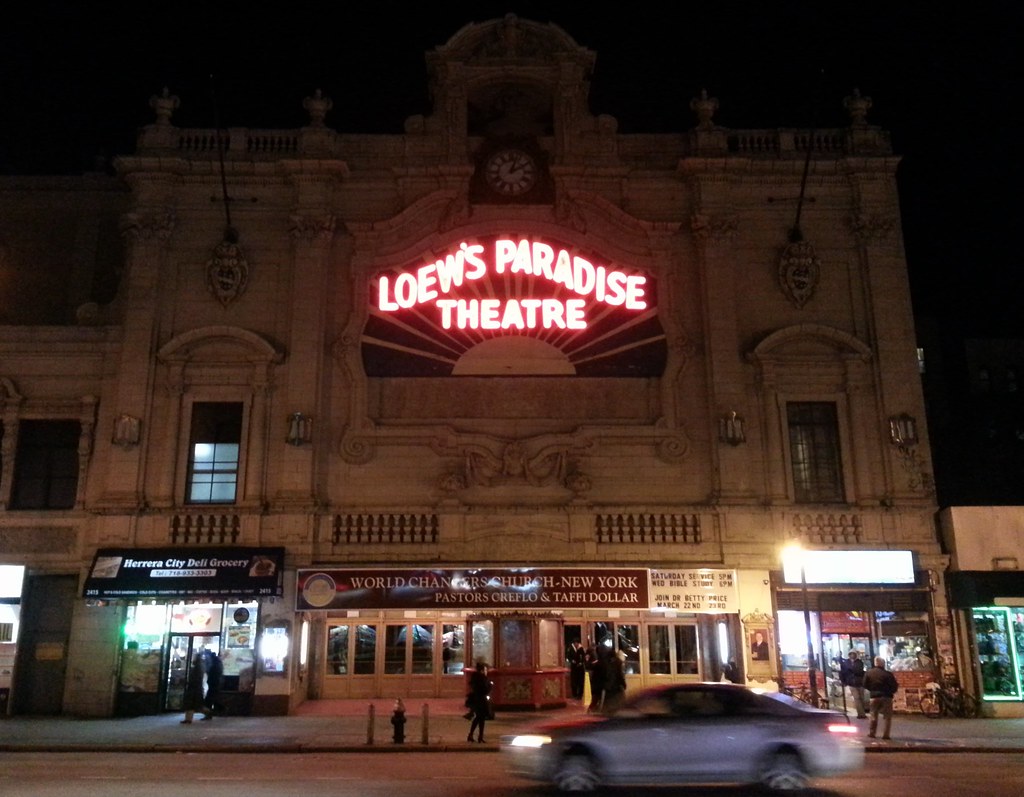
Here we are back at another old friend of ours. The last time we passed by, this old movie palace — built in the late 1920s "to take people out of their humdrum existence and bring them into a world of unimagined wealth and luxury" — was operating as a live entertainment venue, which meant that it was difficult to take a look inside without buying a ticket.
At the end of last year, however, the Paradise was leased to the World Changers megachurch, led by the controversial televangelist Creflo Dollar — he of the prosperity gospel — who holds twice-weekly services here. Meaning... you can now pop by any Wednesday or Saturday night and sneak a free peek at the theater's magnificent interior! I stuck my head in for a few minutes tonight; I wasn't allowed to take pictures during the service, but you can see some great shots of the place in the latter pages of this document.



